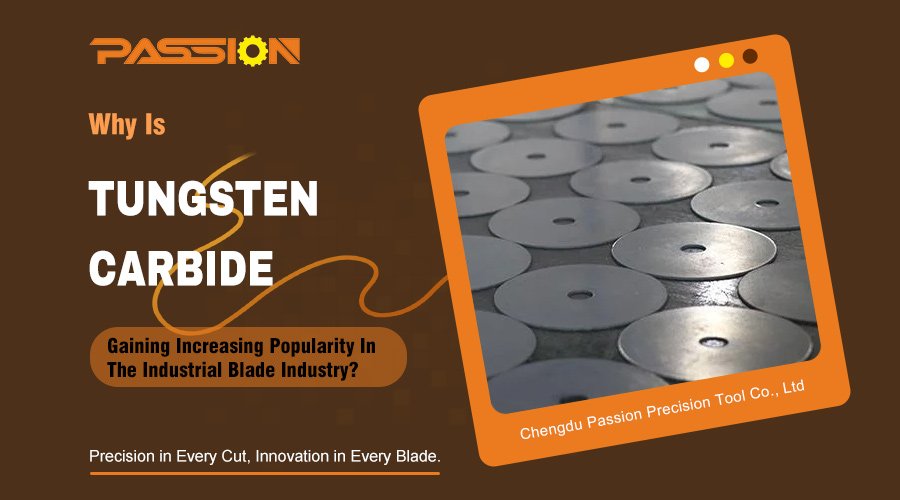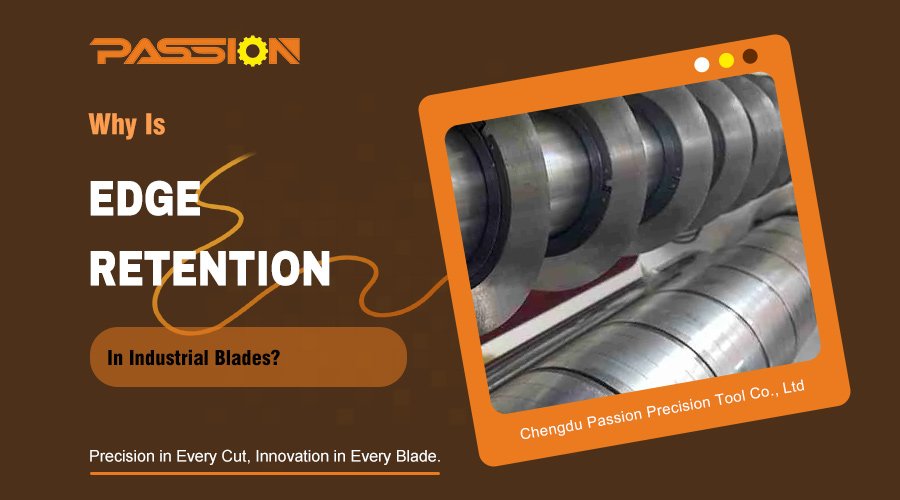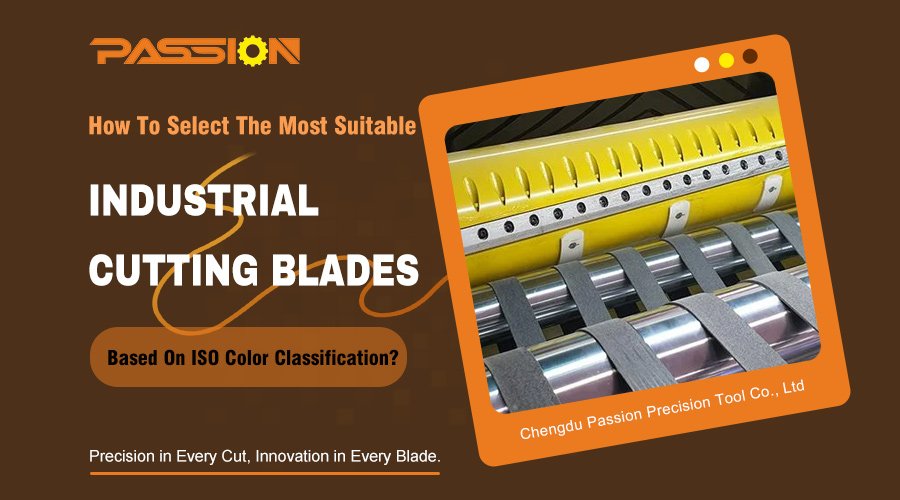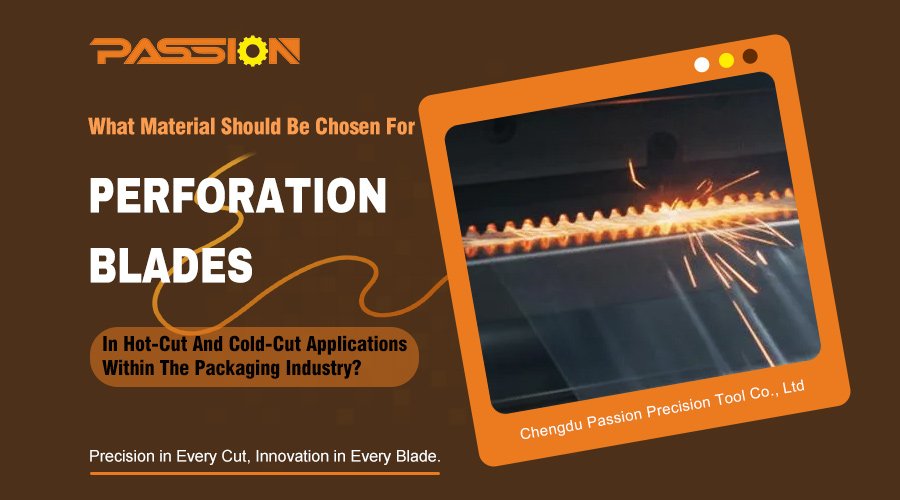As a basic cutting tool in industrial production, the performance of circular knife blades directly determines production efficiency and product quality. From film slitting in the packaging industry to cigarette processing in tobacco manufacturing to meat cutting in food processing, the functional design of circular knife blades needs to accurately match the process needs of different industries. Focusing on the four major areas of packaging, corrugated paper processing, tobacco manufacturing and food processing, analyzing the core functions of circular knife blades and the technical advantages they bring.
Corrugated Paperboard Industry: High Speed Cutting And Structural Stability
Corrugated cardboard is used in a wide range of applications such as courier packaging due to its lightweight and sturdy nature. The application of circular knife blades in this industry requires a balance between cutting speed and structural strength:
High Speed Cutting Capability
Circular blade cutters can efficiently process large quantities of corrugated board through cutting speeds of tens of meters per minute. This performance relies on the blade’s dynamically balanced design, which ensures that it does not vibrate when rotating at high speeds, thus avoiding cutting errors.
Impact Resistant Construction
The fiber structure of corrugated cardboard has a high impact force on the blade, which is why circular knife blades require a combination of hardened cutting edges and a flexible body. For example, the blade is hardened to HRC59-61, while the body remains flexible to absorb the impact of cutting and reduce the risk of chipping.
Wide Format Adaptability
In response to the wide range of corrugated board sizes, round blades need to support adjustable designs. For example, mobile adjustable slitting knives can flexibly adjust the cutting width by means of multiple ring-cutting blades on the center shaft, while shim-type slitting knives can achieve a minimum gap adjustment of 1 mm by inserting shims of different thicknesses.
Packaging Industry: Balancing High Precision And Wear Resistance
In the packaging field, circular knife blades are mainly used for slitting film, paper, aluminum foil and other materials. This industry requires a high degree of cutting accuracy, for example, in the case of insulating films used in the electrical and electronics industry, where cutting errors need to be controlled within the micron range. In order to achieve this goal, circular knife blades need to have the following characteristics:
Micron-level Edge Precision
Through the computer program-controlled four-axis high-precision machine tool processing, the edge precision of the circular blade can be up to 0.02mm, the knife line gap is reduced to 0.3mm, this precision ensures that the cut material edge is smooth and burr-free, avoiding the subsequent printing, laminating and other processes.
Wear Resistance And Anti-adhesion
440C stainless steel has become a common material for packaging circular knife blades due to its carbon content of 1.2% and chromium content of 16-18%. Its hardness can be up to HRC57-59, and it is necessary to use chrome corundum or microcrystalline corundum grinding wheels when grinding to minimize the problem of increased stickiness caused by temperature rise. This combination of materials ensures sharpness when cutting and extends blade life.
Toothed Kerf Design
For different material characteristics, the circular blade can be designed with flat teeth, pointed teeth or irregular teeth. For example, when slitting aluminum foil, the flat-toothed blade with double-sided open edges can reduce the generation of metal chips; while when cutting plastic film, the sharp-toothed blade can reduce cutting resistance.
Cigarette Manufacturing Industry: Multi-material Compatibility And Hygiene Standards
Cigarette manufacturing involves the cutting of three core materials: tobacco, cigarette paper and filters, and circular knife blades need to meet the following requirements:
Multi-material Compatibility
Cigarette cutting requires a blade with extremely low cutting resistance to ensure uniformity of the tobacco; cigarette paper cutting requires flatness of the paper to avoid wrinkles; and filter cutting requires precise control of length and diameter. For this reason, circular knife blades require a differentiated edge design, such as a 42° blade for tobacco cutting and a 52° blade for filter cutting.
Hygienic Surface Treatment
The cigarette industry has strict restrictions on the migration of metal ions, so round blades require special surface treatments. For example, electroplating or chemical nickel plating is used to form a dense coating of 0.01-0.03mm on the surface of the blade to prevent rusting and contamination of the tobacco filament by metal ions.
Low Dust Design
The dust generated during the tobacco cutting process needs to be minimized, so the blades need to be made of sharp steel or tungsten carbide, and the edge burrs need to be reduced through the precision grinding process. For example, the edge roughness of sharp steel circular knives can be controlled below Ra0.4, significantly reducing the amount of dust generated.
Food Processing Industry: Material Compatibility And Safety Specifications
Circular knife blades for food processing need to meet both cutting performance and food safety requirements, with core features including:
Material Compatibility
Circular knife blades need to be differentiated for different materials such as meat, pastry and chocolate. For example, 9CrSi or Cr12MoV is used for meat cutting to take advantage of its high hardness and wear resistance, while 304 stainless steel is used for chocolate cutting to avoid metal ions affecting the flavor.
Antimicrobial Treatment
Food contact surfaces require antimicrobial treatments, such as silver ion coatings or titanium dioxide nanocoatings. These coatings inhibit the growth of common strains of bacteria such as E. coli and Staphylococcus aureus and comply with food safety regulations.
Non-toxic Lubrication
Blades require lubricants when rotating at high speeds, but food-grade lubricants need to meet the requirements of non-toxicity, odorlessness and non-migration. For example, a polytetrafluoroethylene (PTFE) coating is used to reduce cutting resistance and avoid contamination of food by the lubricant.
Cross-industry Common Functions: Precision, Life And Maintainability
While the needs of circular knife blades vary from industry to industry, the following common features are fundamental to all application scenarios:
Accuracy Retention
Deep-cooling technology stabilizes the hardness of circular knife blades at HRC 59-61, reducing hardness degradation during use. In the packaging industry, for example, this technology allows blades to maintain micron-level accuracy after 1,000 hours of continuous operation.
Long Life Design
The use of laser cladding technology to form a 0.2-0.5mm carbide coating on the blade surface can extend blade life by 3-5 times. For example, in corrugated converting, this coated blade can withstand over 600,000 cutting cycles.
Quick Maintainability
The modular design reduces blade changeover time to less than 10 minutes. For example, the blades of the adjustable slitting knives are snap-fastened, allowing for tool-less removal and installation.
With these features, circular blades can be used in the packaging, corrugated converting, tobacco manufacturing and food processing industries to improve cutting efficiency, precision and safety. As material science and manufacturing processes advance, the functional boundaries of circular blades will continue to expand, bringing more possibilities to industrial production.







